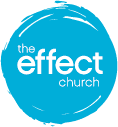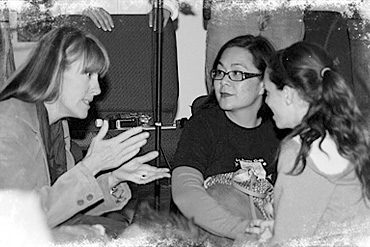
2017 Archives
A Palace in Time
Reading an article by a pastor who now consults and coaches other pastors on growing church attendance, building programs, and time management created a moment of dissonance that I needed to process. In coaching pastors on protecting their time, to focus their time on necessary growth, the author stated that a pastor can only have meaningful relationships with 120 people at a time, and in a church that group is always changing and needs to be managed to the point of actually changing phone numbers and cutting off access to those outside the current 120. Sounds harsh, contains truth, sounds antithetical to Jesus’ principles, but Jesus had inner circles as well. Hence the dissonance. How to balance?
Read More
When Dad Acts Like Mom
Mothers’ Day: I was recently asked that though we know God loves us, how can we know he likes us? Great question, one that goes to the heart of our human experience. On Mothers’ Day, and by way of answering, it’s always good to be reminded of the ancient Hebraic understanding of the roles of mother and father that is coded right into their language. To understand father/Ab, as “strong house,” the support and structure of the family, and mother/Em as “strong water,” the glue that holds the family together, is fundamental to their life in family, tribe, and nation. But it also reveals their view of God as well.
Read More
Fear’s Rules
The cross of Jesus is such a big and central message in Christianity that we need to spend more time on it. So continuing the discussion from the previous week’s message, “Lamb of God,” and in answer to the perennial questions—why is the bible so violent, and why would God sacrifice his son?—we’re looking at deeper ways of understanding Calvary that neither compromise the sacrifice of Jesus nor the love of the Father. In typical midrash fashion (see the message “Deeper Reading” for more on midrash), the New Testament writers portray Jesus on the cross using three deeply embedded images from the Old Testament: the Passover Lamb, the Lifted Up One, and the Scapegoat. To fully understand how Jesus’ first followers understood his sacrifice on the cross, we need to know how these three images functioned in the spiritual lives of the people and how they applied to the spiritual truth of Jesus’ sacrifice.
Read More
Lamb of God
No matter what questions we ask of religion or church, scripture or theology, the subtext, the question we’re always really asking is the same: with all life’s pain, uncertainty, absurdity…do I matter? Am I safe? Whether we’re asking about heaven, hell, salvation, law, or any esoteric point of theology, what we’re really looking for is assurance, confidence in our own acceptability. That’s the human condition. And so it also is as we ask about the cross, about what it really means, and how Jesus as Lamb of God, an innocent blood sacrifice, impacts the nature of a God who Jesus tells us is absolutely all loving. Is there a way to understand the Lamb and the sacrifice in such a way that God’s loving nature is not compromised?
Read More
Ask!
In a talk show interview format, effect board member Tina Henningson works through questions submitted by our membership on everything from the direction and basic beliefs of theeffect—are we Christ centered, Evangelical, emerging, recovery centered, contemplative—to salvation and judgment, Christianity vs. other faith traditions, nature of God’s love, nature of prayer, evil in the world, what is Judaism and why is that important to a follower of Jesus, faith and loss of faith, how to help those in deep grief, miracles, whether church and religion are really necessary… It’s not so much that there are definitive answers to all our questions, but the direction of our questions and consideration of each other’s answers are all part of the journey. So join us in our easy chairs for an evening of talking through the issues that are most on our minds.
Deeper Reading
Just as Jesus’ closest friends were kept from recognizing him after the Resurrection because of their limiting expectations and beliefs, we are kept from seeing the deeper meaning of scripture for the same reason. But even to make such a statement that interprets a passage of scripture beyond the strictly literal meaning of the text demands some explanation. What is an acceptable method of scriptural interpretation that can take us to a deeper reading, a reading beyond the literal, moving us to a spiritual understanding and relevance for our daily lives that is still consistent with the author’s original intent? To answer that question, we need to know how the writers of scripture understood the interpretation of sacred texts in their own time.
Read More
Among the Living
Easter Sunday: Why do all the Gospels preserve stories of Jesus’ closest friends not recognizing him after the Resurrection? Mary in the garden, travelers along the Emmaus road, Peter and the fisherman on the lake. The central question the angels ask the women who have come early Sunday morning to anoint Jesus’ body–why do you look for the living among the dead?—questions our deepest assumptions and beliefs if we will let it. The women expected Jesus to be exactly where they left him Friday afternoon, and we do the same in slavishly following our own expectations and belief systems. Jesus is ushering in something radically different, always in motion, just as spirit itself is always in motion, as life itself is defined by motion.
Read More
Thin Disguise
Palm Sunday, What is the real message behind Palm Sunday. Sunday school graduates can all remember that Palm Sunday gets its name from the palm branches that the people waved in front of Jesus as he rode into Jerusalem beginning the week of his passion and death. Some of us will remember that the palm fronds symbolized the people welcoming him as a victorious king and how that unnerved the watching Jewish and Roman authorities. But how does that translate to us, two thousand years and a world away from those events. Why is it preserved in our sacred text and what can it teach us?
Read More
Footwashers at Heart
On the fifth Sunday of Lent, looking at Lent as a positive-negative: an affirmative stripping away of anything that distracts, obscures, or keeps us away from God’s presence, the image at John’s last supper of Jesus stripping his garments, tying a towel around his hips and moving from friend to friend at table, washing feet gives us another Lenten principle in preparation for new life. It is extremely difficult for us as modern Westerner to appreciate just how mind blowingly outrageous and offensive Jesus’ actions would have been to his friends. There is no relevant analogy for us to bring home the shock of a revered teacher, rabbi, a spiritual master and healer doing what even Jewish slaves were not obligated to do–what was relegated to Gentile slaves. It was dirty, impure, and humiliating work, underscored by Peter’s initial refusal to allow Jesus to wash him.
Read More
My Piece of the Puzzle
On the fourth Sunday of Lent, looking at Lent as a positive-negative: an affirmative stripping away of anything that distracts, obscures, or keeps us away from God’s presence, Pastor Frank examines what it means to find our place in community. Using Paul’s beautiful simile for the body of Christ of a human body with all its parts forming a unified whole, identifying, becoming aware of our place, function, meaning, and purpose in our community in the various bodies in which we work and play and love is essential to being able to find acceptance of the present moment, to realize that we are exactly where we should be, doing exactly what we should be doing.



